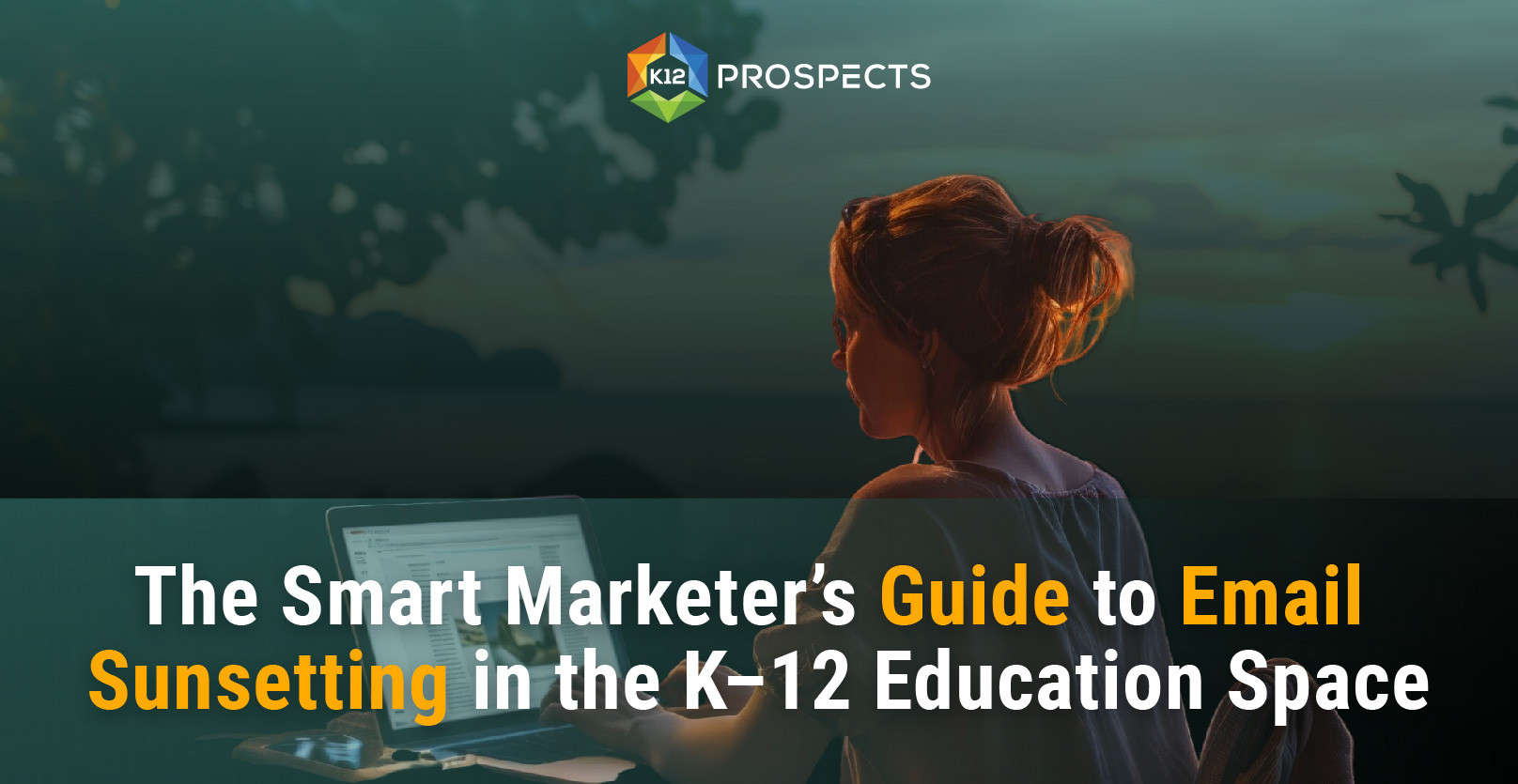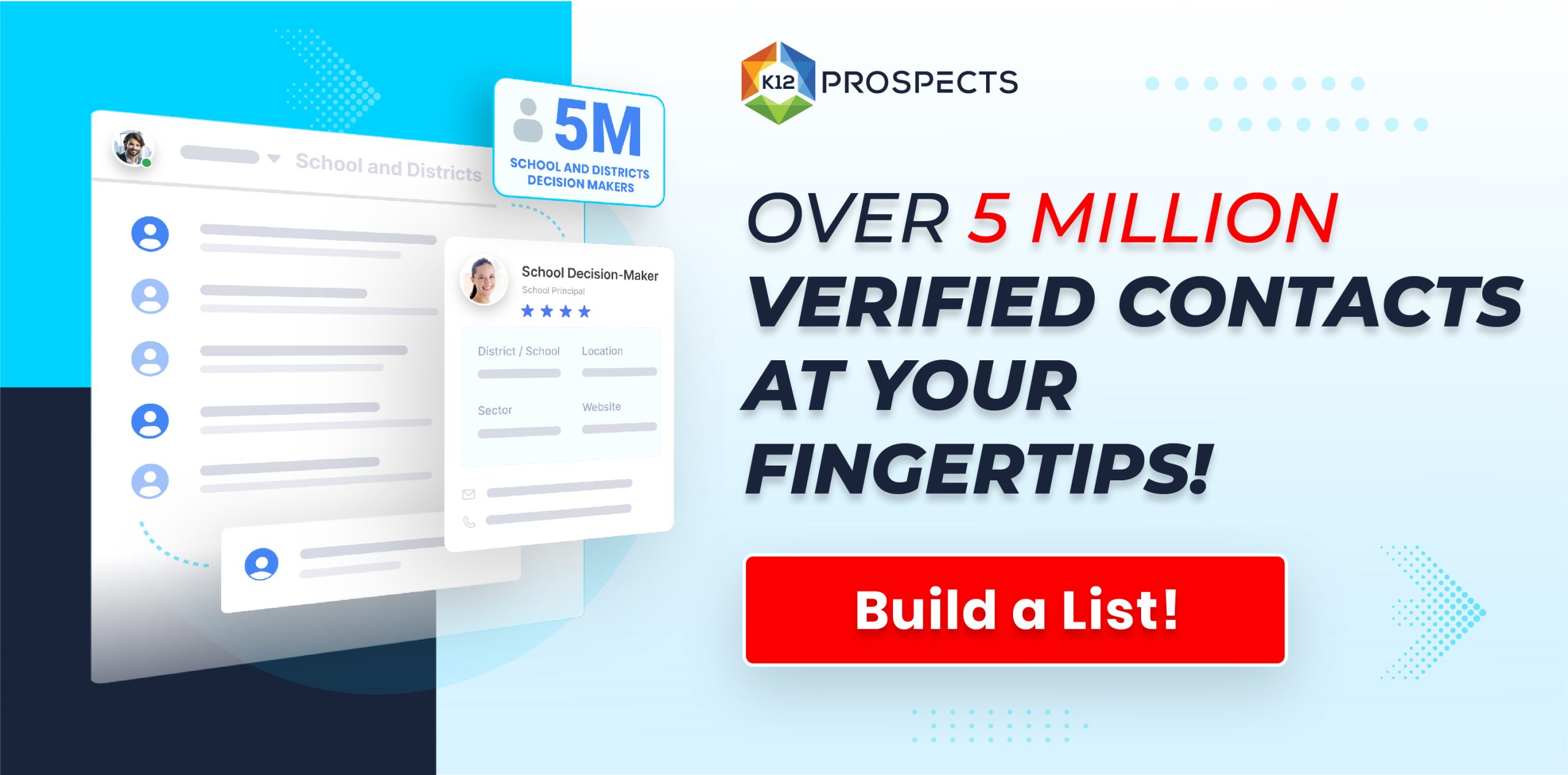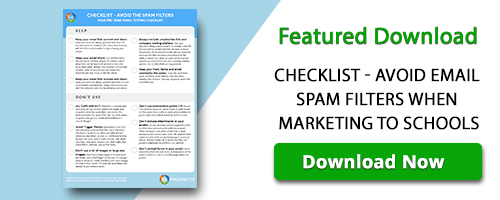The Smart Marketer’s Guide to Email Sunsetting in the K–12 Education Space

If your company sells products or services to schools or districts, email marketing is likely one of your most effective outreach tools. Whether you’re promoting edtech solutions, classroom supplies, student assessments, or curriculum materials, building a direct relationship with educators and administrators via email is critical. But to get results, your email list needs more than volume—it needs engagement.
One common mistake companies make is holding on too long to unresponsive contacts. It may feel like every email address in your list is a potential deal waiting to happen. However, inactive subscribers do more harm than good when it comes to your email performance. That’s where email sunsetting comes into play—a key tactic to improve email health and long-term campaign success.
What Is Email Sunsetting?
Email sunsetting refers to the process of phasing out or removing subscribers who haven’t interacted with your emails for a certain period—usually between 6 to 12 months. This doesn’t mean you’re throwing away leads. On the contrary, it’s a proactive way to protect your domain reputation, improve inbox placement, and ensure your messages reach the right educators and school leaders.
In the K–12 sector, where decision-makers often work under tight schedules and overflowing inboxes, it’s especially important to focus on those contacts who show genuine interest. A smaller, engaged list will outperform a massive, dormant one every time.
Why Keeping Inactive Emails Is Risky
Failing to sunset disengaged recipients can seriously impact your ability to communicate with schools and districts effectively.
Email service providers like Gmail, Outlook, and Yahoo track how users interact with your emails. If too many of your emails go unopened or are deleted without being read, the provider interprets this as a lack of interest—and your emails may start landing in the spam folder.
But the problem doesn’t stop there. Old, unused email addresses can turn into spam traps, which are monitored by anti-spam organizations. These traps are designed to catch senders who don’t clean their lists. Hitting these addresses can land your domain on a blocklist, which can prevent all your emails—including ones to active users—from getting through.
Spam complaints are another issue. Even if you follow the rules and offer one-click unsubscribe options, if you continue sending to someone who hasn’t opened a message in months, they may simply mark your email as spam. These negative signals can hurt your sender score and reduce deliverability across the board.
Why This Matters in the Education Market
The K–12 space is unique. School administrators are selective with their time and cautious about which vendors they trust. If your emails consistently land in their spam folders or don’t appear at all, you’re not only losing potential revenue—you’re damaging your brand’s credibility.
School district IT filters are often strict. Deliverability issues caused by sending to unengaged contacts might not just hurt one campaign—they can get your entire domain flagged, blocking future outreach to other districts, even if those decision-makers are interested in what you offer.
How to Approach Sunsetting Strategically
Sunsetting isn’t just about deleting old contacts; it’s about optimizing your list to prioritize value and build trust with mailbox providers. Here’s how companies in the K–12 market can approach it smartly:
1. Segment Your Audience by Engagement
Start by breaking your email list into segments based on activity. For example:
- Highly active (opened/clicked in the last 30 days)
- Moderately active (engaged within 60–90 days)
- Inactive (no engagement in 90+ days)
This segmentation helps you understand which groups are driving conversions—and which ones are pulling your metrics down.
2. Analyze Engagement Trends
Look at the performance of each segment. What are the open rates, click-throughs, and conversions? Are your emails to inactive users getting any traction? If not, you’re probably wasting budget and risking deliverability.
Also, keep an eye on spam complaint rates and unsubscribes. If certain segments consistently generate complaints, that’s a red flag.
3. Launch a Re-Engagement Campaign
Before you sunset a contact, try winning them back. Create a short, targeted email sequence offering a compelling incentive—this could be a valuable piece of content (like a free guide or worksheet), a discount, or a spotlight on your newest product for educators.
If they still don’t engage after the reactivation series, it’s time to let them go.
4. Use a Gradual Removal Process
Avoid suddenly removing thousands of contacts from your list at once. This could create unusual sending patterns that alarm email providers. Instead, phase out the unengaged segment over time—weekly or monthly—based on last engagement date.
Also, during this phase, throttle down the frequency for these users. If your active subscribers are getting weekly emails, try bi-monthly or monthly for those on the edge of inactivity.
5. Offer a Preference Center
Let educators and administrators control how often they hear from you. Giving them the ability to choose daily, weekly, or monthly emails reduces the risk of complaints and increases retention. You might even find that a less frequent schedule improves long-term engagement.
How to Pitch Sunsetting Internally
If you’re on a sales or marketing team and need to justify sunsetting to leadership, here’s how to frame it:
- It protects revenue: Inactive subscribers don’t convert. Removing them ensures your messages reach the people who do
- It improves deliverability: Cleaner lists result in higher open rates, better inbox placement, and more conversions from school and district decision-makers.
- It enhances brand trust: Schools are sensitive to spam. If your emails are well-timed, relevant, and wanted, you build a reputation as a reliable vendor.
- It reduces risk: Avoiding spam traps and blacklists keeps your domain safe and your campaigns performing.
Use internal data to prove your case. Show how open and click rates drop as contacts age. Demonstrate how sunsetting improves average performance metrics. Even simulate scenarios showing what happens to deliverability when engagement increases.
The Big Picture: Quality Over Quantity
In education marketing, especially in K–12, quality always wins over quantity. You’re not selling to the general public—you’re communicating with school professionals who demand relevance, clarity, and trust.
Implementing a sunsetting strategy will help you fine-tune your outreach and build long-term relationships with the right audience. More importantly, it positions your company as thoughtful, compliant, and respectful of the digital boundaries of your customers.
It’s time to rethink your email list. Fewer contacts with higher engagement will always outperform a bloated list filled with disengaged recipients. Make room for the educators who actually want to hear from you—and watch your results improve.
At K12 Prospects, we take the hassle out of email list management by doing all the work for you. Our data is regularly cleaned and maintained, and every purchase includes 12 months of free updates. If a contact leaves their role—whether due to retirement, a job change, or any other reason—we provide you with both the new person in that position and a report of those no longer active. This ensures your outreach is always accurate, up-to-date, and optimized for the best possible performance.



